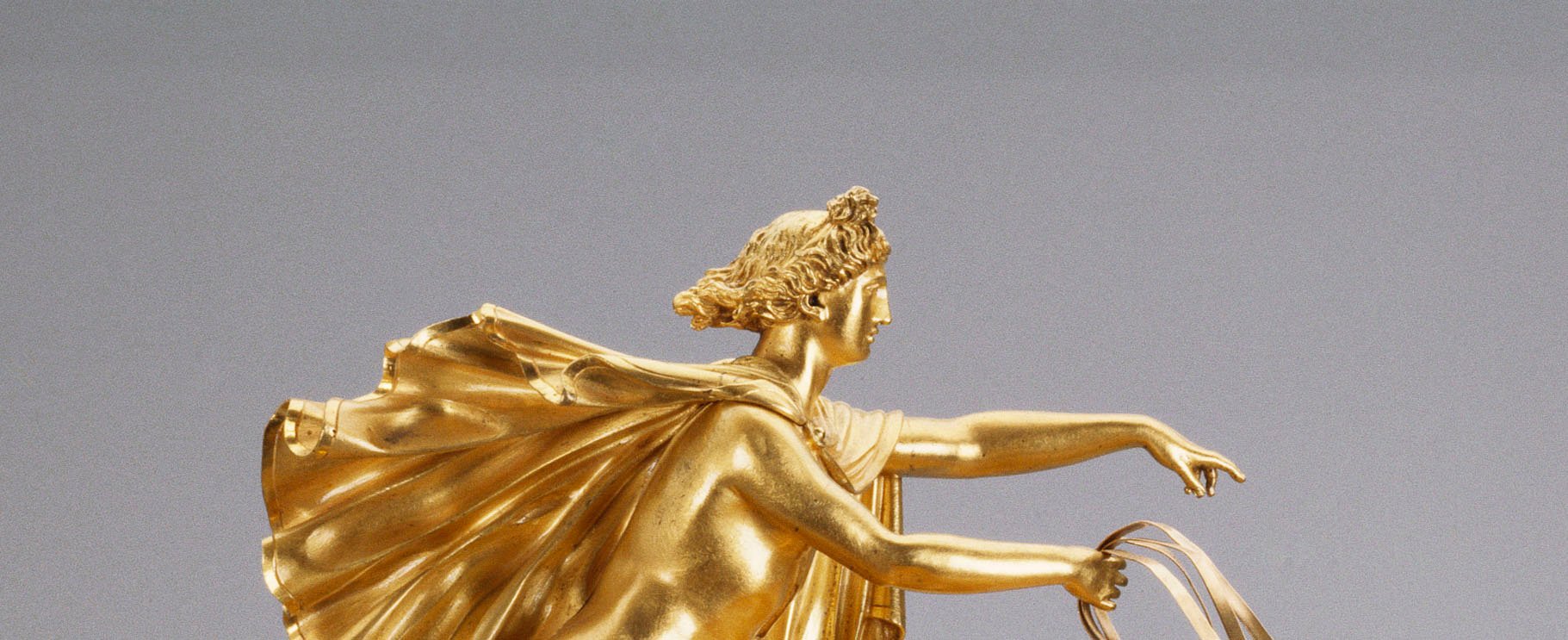
JOHN HOPPNER (1758-1810)
Princess Mary (1776-1857)
c.1785RCIN 400167
This painting belongs to the group of three portraits of George III’s younger daughters painted in 1785. It has been suggested that Hoppner’s portrait of Princess Mary was painted in homage to Rubens’s famous painting of Susanna Fourment - Le Chapeau de Paille (London, National Gallery) - which enjoyed a great reputation during the later eighteenth century. The artist has deliberately portrayed the Princess - then aged 9 - as a young woman rather than a child, a distinction that he was careful to make from the beginning of his career. This would have been very apparent to visitors to the Royal Academy in 1785, this portrait was exhibited with John Singleton Copley’s large group portrait of the royal Princesses playing in the grounds of Windsor Castle (also in the Royal Collection). Hoppner’s anonymous criticisms of Copley’s picture, printed in The Morning Post, appeared to be motivated by spite in the light of his own contribution, but his remarks about Copley’s picture were echoed by other critics at the time. He was even more critical of Benjamin West’s contribution to the Academy that year, which included two works from the series of paintings of the History of Revealed Religion, intended for the King’s Chapel at Windsor. Hoppner’s review criticised West for his ‘particular patronage’ despite the fact that he too had benefited from the King’s benevolence.
Although highly critical of his rivals’ exhibits at the Royal Academy in 1785, Hoppner’s own contribution did not escape unscathed. Horace Walpole described the portrait as ‘poor’ in his copy of the exhibition catalogue, whilst an anonymous reviewer wrote, ‘We cannot compliment the artist upon his success in portraying the lovely subject. He has attempted a tenderness of colouring, and failed in giving that prominence to the features, which is requisite.’
Hoppner’s historical reputation has suffered partly because of the supposed rivalry between him and Sir Thomas Lawrence. Both artists were made full Academicians on 4 April 1795 and two weeks later George III passed over Lawrence, his Principal Painter, to place a commission with Hoppner for a full-length portrait of the Princess of Wales in her wedding dress. However, after a quarrel with the King, Hoppner’s commission was revoked and given to Gainsborough Dupont.
Catalogue entry adapted from George III & Queen Charlotte: Patronage, Collecting and Court Taste, London, 2004
Although highly critical of his rivals’ exhibits at the Royal Academy in 1785, Hoppner’s own contribution did not escape unscathed. Horace Walpole described the portrait as ‘poor’ in his copy of the exhibition catalogue, whilst an anonymous reviewer wrote, ‘We cannot compliment the artist upon his success in portraying the lovely subject. He has attempted a tenderness of colouring, and failed in giving that prominence to the features, which is requisite.’
Hoppner’s historical reputation has suffered partly because of the supposed rivalry between him and Sir Thomas Lawrence. Both artists were made full Academicians on 4 April 1795 and two weeks later George III passed over Lawrence, his Principal Painter, to place a commission with Hoppner for a full-length portrait of the Princess of Wales in her wedding dress. However, after a quarrel with the King, Hoppner’s commission was revoked and given to Gainsborough Dupont.
Catalogue entry adapted from George III & Queen Charlotte: Patronage, Collecting and Court Taste, London, 2004







